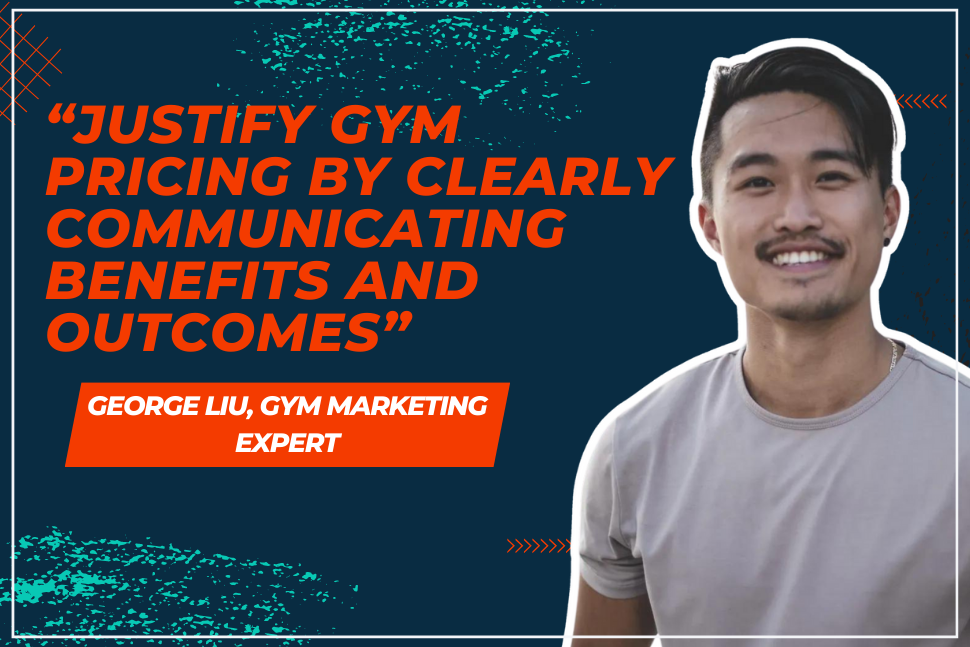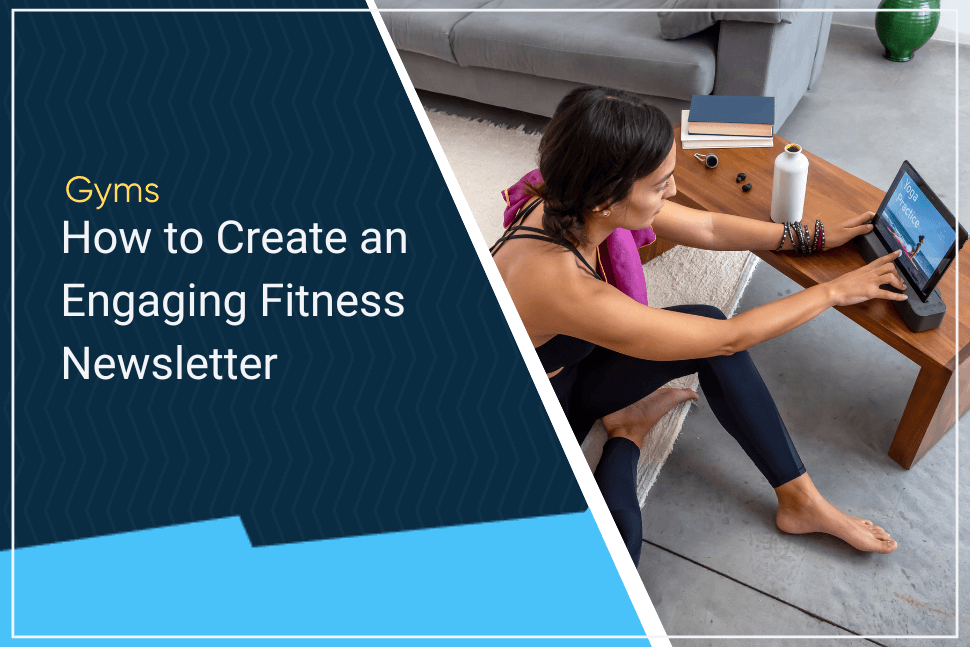Our hero today is George Liu, a lifelong fit fanatic turned lead gym expert for gyms. Drawing from a wealth of compelling case studies, George demonstrates how you can generate business saving profits fast from well-designed upfront offers.
In fact, George even saved a gym that was less than a month from closing down using the systems he unpacks in this very episode.
Craft an Irresistible Offer
An irresistible offer is the cornerstone of any successful gym’s marketing strategy. It’s an offer that not only piques the interest of potential clients but also communicates immense value. Here’s how you can create an offer that potential clients can’t resist:
- Understand Your Ideal Client: Identify who your target audience is. Are they looking to lose weight, gain muscle, or enhance their overall fitness? Knowing their exact goals and challenges allows you to tailor your offer to meet their specific needs.
- Map Out Step-by-Step Solutions: Clearly outline the steps your clients need to follow to achieve their fitness goals. This includes not only workout plans but also nutritional guidance and support systems.
- Communicate Value Effectively: Relate your service’s value in terms of the client’s personal and emotional wins, not just the technical aspects of fitness. Example: “Our program isn’t just about losing weight; it’s about gaining confidence and feeling your best every day.”
- Leverage Social Proof and Testimonials: Utilize success stories and testimonials to build credibility and showcase the real-life impact of your programs.
Organic Marketing: Building a Base Without Breaking the Bank
Organic marketing can be a cost-effective way to attract high-quality leads through referrals andword-of-mouth. While it may not provide the rapid results of paid media, it builds a solid foundation for long-term success.
- Engagement on Social Media: Regularly post valuable content that addresses the needs and interests of your target audience. Engage with them by responding to comments and questions.
- Content Creation: Write blogs, create videos, and share success stories that can help educate and inspire your audience. Quality content positions you as an authority in the fitness industry.
- Member Referral Programs: Encourage your current members to refer friends and family by offering incentives like discounts on future services or free merchandise.
- Community Events: Host local events such as free workout sessions or fitness challenges to bring in new faces and generate interest.
The Power and Pitfalls of Paid Media
Paid media can deliver rapid results if managed correctly but comes with its own set of challenges that need careful navigation.
- Creating the Right Offer: Your paid ad campaigns must promote an irresistible offer fitting your target audience’s needs. Ensure that the message is clear and compelling.
- Setting a Budget and ROI Expectations: Start with a budget appropriate for your business size and monitor results closely. Aim for a favorable return on investment (ROI) by analyzing cost per acquisition and other key metrics.
- Optimizing Ad Campaigns: Regularly review and adjust your campaigns based on performance data. Tweak ad copy, targeting, and placements to maximize effectiveness.
- Retention Strategies: Once you’ve acquired a customer through paid media, retaining them is crucial. Ensure they have an excellent experience so that the lifetime value of each customer increases.
Pricing Strategies: Know Your Worth
Often, gym owners struggle with pricing their services aggressively enough to maintain profitability. Undercharging can severely impact your bottom line, and a low profit margin leaves little room for growth.
- Understand Client Value: Clients are willing to pay more for personalized, high-quality services. Connect pricing to the value and results your programs deliver.
- Tailored Programs: Offer programs that align with the specific goals and needs of your clients, whether it’s weight loss, muscle gain, or overall fitness improvement.
- Strategic Packaging: Combine different services into packages that add value. For instance, offer a mix of personal training sessions, nutritional guides, and group classes to justify premium pricing.
- Overcoming Pricing Limiting Beliefs: Justify your price by clearly communicating the benefits and outcomes clients can expect. Don’t sell yourself short; higher prices can also signify the quality and exclusivity of your services.
The Importance of a Strong Sales Process
A strong sales process ensures that leads generated by organic and paid marketing efforts convert into paying clients. Sales are the lifeline of any fitness business, and understanding how to convert leads is essential.
- Building Rapport and Trust: Initial interactions should focus on understanding the client’s needs, building rapport, and establishing trust.
- Value-Based Selling: Instead of focusing on cost, discuss the value your program brings. Explain how your training will solve their problems and meet their goals.
- Handling Objections: Prepare for common objections related to pricing or time commitment. Empathize with prospects and offer solutions that address their concerns.
- Follow-Up: Implement a solid follow-up strategy to keep potential clients engaged. Personalized follow-up messages that address their specific goals and queries can move them closer to conversion.
Delegation and Systemization for Efficiency
For gym owners seeking to scale their business while working fewer hours, delegation and systemization are key. Efficient processes ensure that the business can operate smoothly without constant oversight.
- Document Processes: Create detailed documentation for all your business processes, from client onboarding to daily operations. This makes it easier to train employees and maintain consistency.
- Delegate Responsibilities: Identify tasks that can be delegated to other team members. Hire and train staff to take on these responsibilities, freeing you up to focus on strategic growth areas.
- Automate Where Possible: Utilize software for appointment scheduling, membership management, and client communications. Automation reduces manual workload and minimizes errors.
- Monitor and Adjust: Keep an eye on delegated tasks and systemized processes. Regularly review their effectiveness and make adjustments as needed to ensure they continue to meet your business goals.
Setting Expectations and Maintaining Motivation
It’s crucial to set the right expectations upfront to maintain client motivation and engagement. This involves guiding clients through their fitness journey, particularly during challenging times.
- Clear Goals: Establish clear, realistic fitness goals with clients. Continuous communication about progress and adjusting goals as needed help maintain motivation.
- Quick Wins: Focus on achieving early results that provide clients with immediate gratification and boost their confidence in the program.
- Emotional Support: Be supportive and empathetic. Understanding the psychology of buying and motivation helps in offering encouragement during tough periods.
- Ongoing Engagement: Keep clients engaged with regular check-ins, motivational messages, and by celebrating milestones. Membership renewals and long-term commitments thrive on consistent engagement.
Long-Term Value and Customer Retention
Customer retention is just as important, if not more so, than customer acquisition. High client retention rates directly boost profitability and business stability.
- Meaningful Long-Term Value: Provide programs that offer sustainable, long-term benefits for clients. This could include lifestyle coaching or extended fitness programs tailored to different phases of their fitness journey.
- Planting Seeds for Future Offers: Early on, discuss potential future programs and long-term goals with clients. This keeps them looking ahead and considering prolonged engagement.
- Front-End Offers for Lifetime Value: Create initial offers that lay the groundwork for extended customer relationships. These should be geared towards delivering immediate value while opening pathways for ongoing services.
- Avoiding Free Trials and Low Barrier Offers: These can dilute the perceived value of your services unless you have significant brand recognition. Higher entry offers signal the quality and commitment expected from the programs.
Case Studies and Real-Life Applications
One illustrative case was that of a struggling gym in Colorado. Implementation of the strategies discussed here transformed it from the brink of bankruptcy to significant profit generation. Techniques such as creating high-value offers, effective paid ad campaigns, and a strong sales process played a pivotal role in the turnaround.
Conclusion
Implementing these practical strategies can transform your gym business, creating a robust system where marketing, sales, value communication, and retention work in harmony to drive high profits. Start by crafting irresistible offers and leveraging organic and paid media effectively. Then, ensure that your sales processes are optimized, and focus on delivering unsurpassed value to create long-lasting client relationships.
For more information and to connect with George Liu, follow him on Instagram at GeorgeL1022.
 39 Martial Arts Statistics To Know in 2022
39 Martial Arts Statistics To Know in 2022



